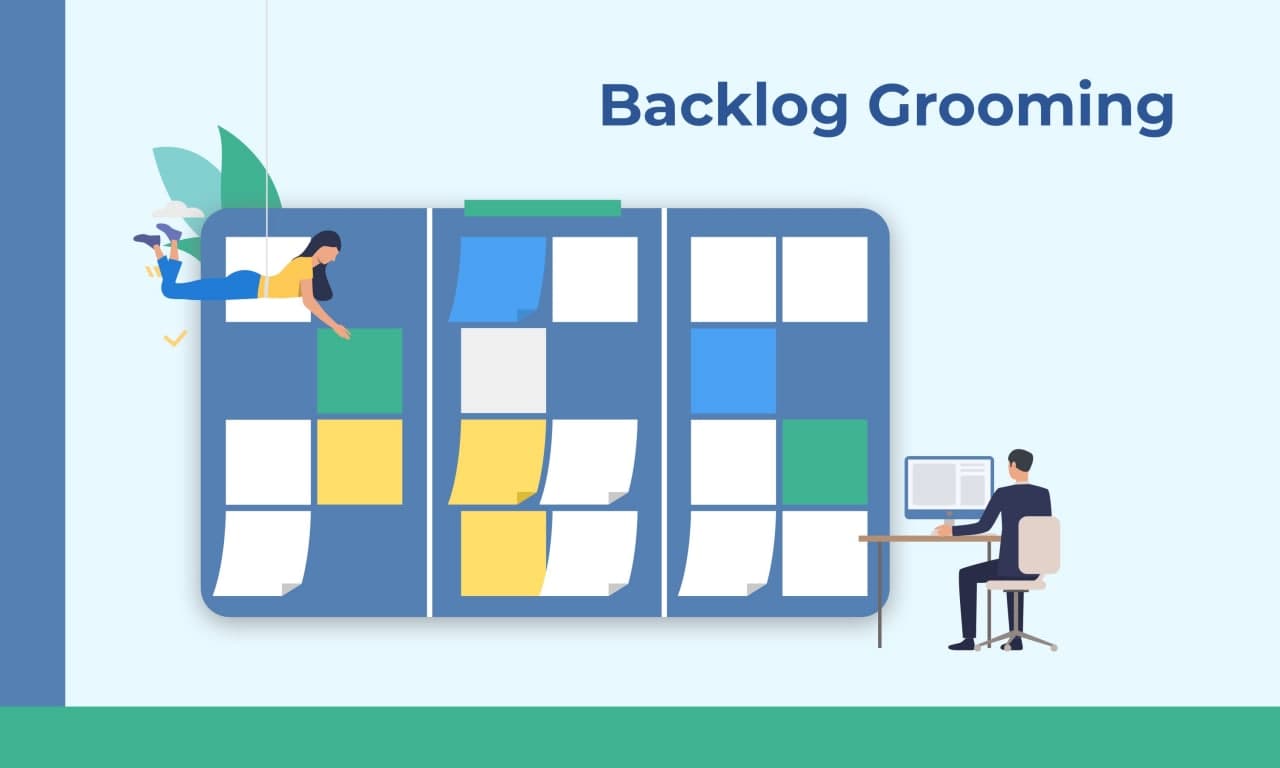What Is the Difference Between Product Backlog Grooming and Sprint Planning?

Effective team collaboration in sprint planning is the obligatory condition of a qualitative result. It makes the team move in the same direction. However, sprint planning is often confused with backlog grooming or refinement.
What’s the difference?
What is Backlog Grooming?
Grooming (or refinement) is a meeting of the Scrum team in which the product backlog items are discussed and the next sprint planning is prepared.
Product grooming is critical in product management because it means keeping the backlog up to date and getting backlog items ready for upcoming sprints.
Backlog grooming is often named pre-planning. The product owner and team representatives arrange it in the mid-sprint time. In this case, planning and refinement meetings alternate but happen on the same day each week. That provides an effective rhythm for the entire team.
The grooming involves splitting big items into smaller ones, rewriting backlog items to be more expressive, deleting obsolete or no more need items, and so on.
Product owners should always keep the backlog tidy. Regular involving team members is optional.
Actually, it is already a formal ceremony of the Scrum process (was added to official ceremonies in 2011).
Product owners identify user stories based on priorities for the next sprint planning. Groomed Scrum backlog helps to streamline sprint planning meetings to avoid stretching them for hours.
Key advantages of product backlog refinement:
- Removing uncertainty and unknown facts of user stories increase the product’s efficiency.
- It assists to avoid rework in development and testing.
- Backlog grooming identifies the dependencies within the team and helps to foresee risks.
- Permanent grooming meetings save time for the development team for further discussion during the sprint cycle because they give clarity to developers and testers about the requirements.
- Successful grooming leads to effective sprint planning.
- The grooming process gives product owners, managers, or business analysts more chances to enhance the requirements with more information if it’s required.

What is Sprint Planning?
The main idea of sprint planning is to agree on the goal for the current sprint and sprint backlog.
It’s not only about communicating requirements but about learning, defining options, and making decisions together as a team.
During this meeting, the product owner and the team discuss which stories the team will do in that sprint. It can last from two to four hours. This may include refinement sessions as well. Sometimes teams cut this time down to one hour per week but this also looks appropriate. The meeting should be attended by the whole team. If additional expertise on specific backlog items are required, then stakeholders can be also invited.
During the sprint planning meeting, the product owner describes the highest priority features to the entire team.
How to Run an Effective Sprint Planning Meeting?
There are some essential activities that should take place in the sprint planning meeting:
- Define the dates and duration of Sprint if needed. Typically teams try to follow a set pattern when it comes to sprint durations. When change is necessary, the sprint planning meeting is the place where these changes are implemented.
- Check priorities, move the right items from the backlog to the sprint. While it is critical to get as much work done as possible, it is also important to have a product or component that is usable during the demo.
- Agree on metrics to track during the sprint. This step also involves finalizing roles and responsibilities. Try to have everyone on the same page to set up and track metrics for the sprint.
- Determine the demo date and agree on what the deliverables for the demo will be. An important aspect is to have a demo at the end of every sprint to demonstrate what the team has built.
Sprint planning includes agreeing on the number of backlog items in the sprint that is the responsibility of the development team.

Backlog Grooming vs Sprint Planning: Are There Any Similarities?
- Both Scrum ceremonies strive to ensure that a team has a shared understanding of a particular body of work.
- They both seek to engage all attendees in the conversation.
- They both are more likely to have successful results if there is an experienced facilitator, who guides the conversation, without pushing the team in a particular direction.
- Backlog grooming and Sprint planning are more likely to have successful results if there is a person present who can act as the “Voice of the Customer” (Product Owner in Scrum).
The product backlog is the input for sprint planning. Product owners and product managers care about the effectiveness of the meeting, that’s why the most important items that should be tackled next (the very top of the backlog) should be well-groomed ahead of time.
If you want to get more about the refinement process, dive into our articles:



